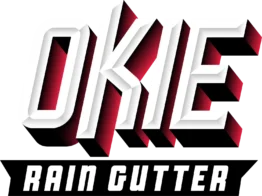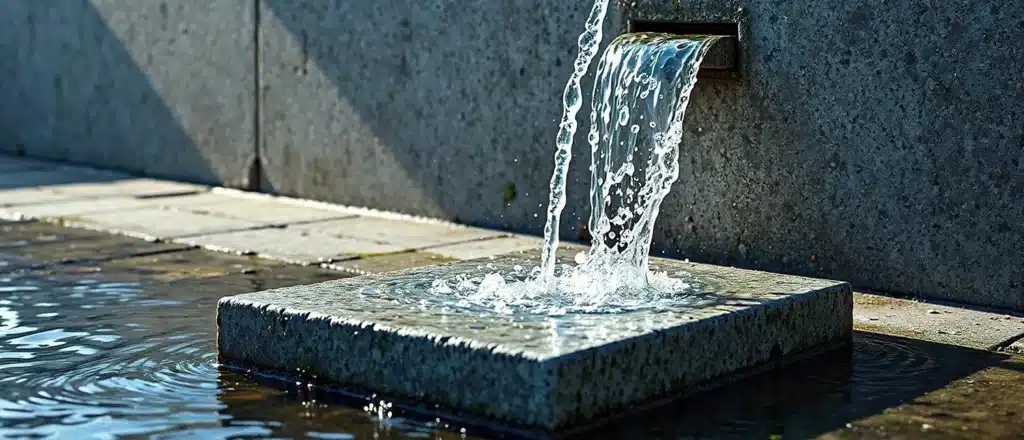You know what I see almost every day? Homeowners dealing with wet basements and foundation problems that could’ve been prevented with something as simple as a concrete splash block. Let me tell you, these aren’t just those plain grey things you see at the hardware store – they’re your foundation’s first line of defense against water damage.
Here’s what I’ve learned from installing thousands of gutter systems and dealing with water management issues:
- That cheap plastic splash block you grabbed from the big box store? It’ll crack by next season
- Most foundation problems start with water not being directed far enough away from your house
- Your downspouts are dumping out gallons of water during a storm – that water needs somewhere to go
- Those fancy underground drainage systems won’t work right if you don’t have proper splash blocks
- The soil around your foundation will thank you for spreading out all that rainfall
Why You Really Need Concrete Splash Blocks
Let me break this down the way I explain it to my customers on job sites. Your concrete splash block isn’t just a fancy rain collector – it’s doing some serious work:
- Think of it like a mini water highway directing rainfall away from your foundation
- It prevents that crater that forms under your downspout during heavy rain
- Keeps your mulch from washing into your neighbor’s yard every time it storms
- Protects your foundation from constant water exposure
- Saves you thousands in potential water damage repairs
The Real Deal About Quality
Here’s something they won’t tell you at the store about concrete splash blocks:
- The lightweight ones? They’ll float away in our Oklahoma storms
- Good concrete mix matters – cheap ones crumble after a few freeze cycles
- Reinforced edges prevent chipping when you hit them with the lawn mower
- Smooth surfaces actually work better than rough ones for water flow
- Weight is your friend – heavier blocks stay put during heavy rains
Installation Secrets Most People Miss
Let me share what I’ve learned about placing concrete splash blocks:
- That little slope matters more than you’d think
- You want about a 2-degree tilt away from the house
- Don’t just drop it under the downspout and call it good
- The ground underneath needs to be solid and level
- Position it so water flows toward your yard, not your driveway
Solving Common Water Problems
I see these issues every day, and concrete splash blocks can help:
- Basement water seepage
- Eroded landscaping
- Foundation cracks from water pressure
- Soggy spots in the yard
- Mulch washing away
- Dirty siding from backsplash
- Standing water near the house
Seasonal Challenges We Face in Oklahoma
Let’s talk about how weather affects your concrete splash block:
- Summer heat can cause the ground to shift
- Winter freezes can crack poor quality blocks
- Spring storms test their placement
- Fall leaves can redirect water flow
- Ice buildup needs special attention
- Wind can move lightweight blocks
- Heavy rains show any installation flaws
Size Really Does Matter
Here’s how I help customers choose the right size concrete splash block:
- Measure your roof area draining to each downspout
- Consider your annual rainfall
- Look at your yard’s slope
- Check how far you need water to travel
- Account for landscaping obstacles
- Plan for future additions
- Consider multiple blocks for heavy flow areas
Professional Installation Tips You Can Use
Even if you’re doing it yourself, here’s what we pros check:
- Ground compaction before placement
- Proper grading of the surrounding area
- Downspout alignment and height
- Water flow patterns during rain
- Soil type and drainage capability
- Landscape impact
- Future maintenance access
The Truth About Maintenance
Let me tell you what really needs to be done with concrete splash blocks:
- Check position after heavy storms
- Clean out any debris buildup
- Watch for erosion underneath
- Monitor for cracks or damage
- Adjust for settling ground
- Clear snow and ice in winter
- Trim grass around edges
Understanding Water Flow Patterns
Here’s something most people don’t think about:
- Water doesn’t always flow straight
- Wind affects splash patterns
- Ground settling changes flow direction
- Landscape changes impact drainage
- Different roof pitches need different solutions
- Volume matters as much as direction
- Multiple story homes need special consideration
Working With Your Landscape
I always tell customers to think about:
- How water affects their garden beds
- Where their kids play
- Pet traffic patterns
- Future landscape plans
- Existing drainage systems
- Natural low spots
- Property line considerations
Emergency Situations and Solutions
Sometimes you need quick fixes when concrete splash blocks aren’t enough:
- Temporary extensions during heavy rains
- Emergency drainage solutions
- Quick fixes for damaged blocks
- Overflow management
- Storm preparation steps
- Flood prevention measures
- Backup system options
Special Property Challenges
Every house is different. Here’s what we look at:
- Hill and slope situations
- Tight spaces between houses
- Problem soil areas
- High water table locations
- Historic home requirements
- Modern architectural challenges
- Complex drainage needs
Planning for the Future
Think ahead with your concrete splash block system:
- Landscape changes
- Home additions
- Climate changes
- Drainage upgrades
- System expansion
- Maintenance schedules
- Replacement timing
The Cost-Benefit Reality
Let me break down the investment in concrete splash blocks:
- Initial cost versus long-term savings
- Prevention versus repair expenses
- Installation options and pricing
- Maintenance costs over time
- Property value impact
- Insurance considerations
- Replacement planning
Making It Work With Existing Systems
Here’s how we integrate concrete splash blocks with:
- Current drainage
- Irrigation systems
- French drains
- Rain gardens
- Dry wells
- Channel drains
- Underground systems
Dealing with Contractor Installations
If you’re hiring someone, make sure they check:
- Proper sizing for your needs
- Quality of materials
- Installation techniques
- Warranty coverage
- Future maintenance access
- System integration
- Follow-up service
Environmental Benefits
These aren’t just for your house – concrete splash blocks help:
- Prevent soil erosion
- Manage storm water
- Protect local watersheds
- Conserve topsoil
- Support plant growth
- Reduce runoff pollution
- Maintain ground stability
Listen, I’ve seen every kind of water problem you can imagine, and proper concrete splash blocks could have prevented most of them. They might seem simple, but they’re one of the most important parts of your home’s water management system.
Want to make sure your splash blocks are doing their job right? Give us a call at Okie Rain Gutter. We’ll take a look at your specific situation and make sure you’ve got the right setup to protect your home. Sometimes the simplest solutions are the most effective – you just need to know how to use them right.

